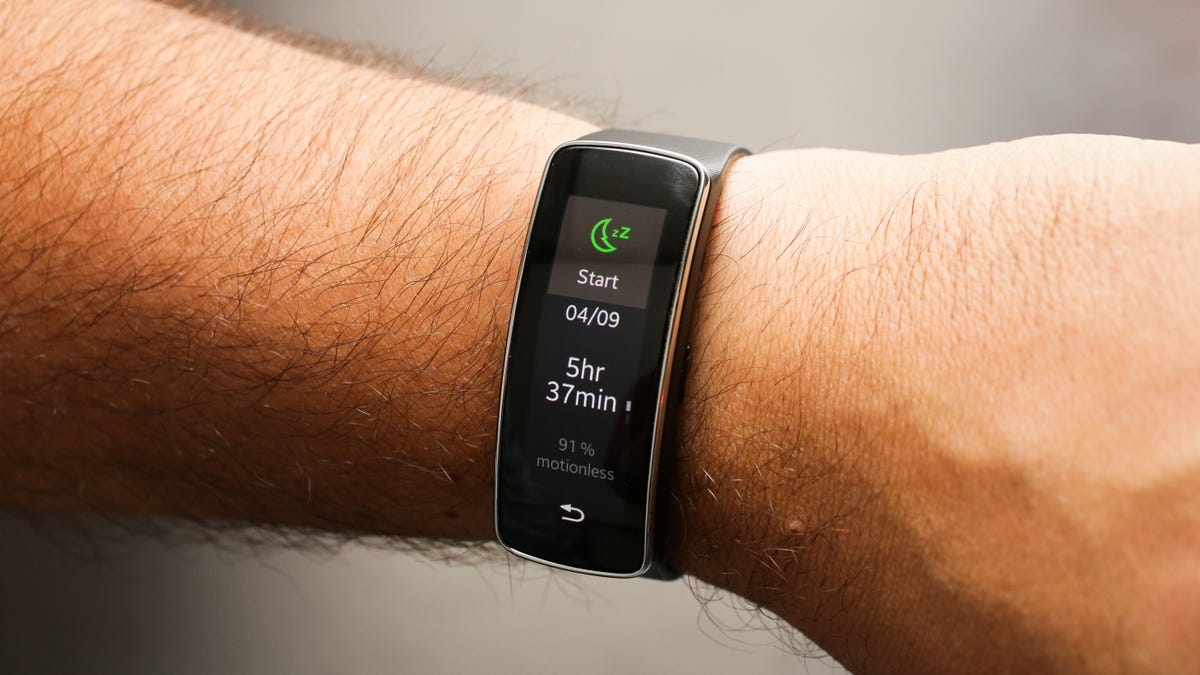
Sarah Tew/CNET
If you had walked into a flagship Niketown store at a certain point in 2012, you might have had to look twice to realize that the global athletic apparel behemoth actually sold clothing. The reason for this shifting of focus from active wear was due to a bit of electronic wristwear: the Nike+ FuelBand.
The FuelBand was far from Nike’s first electronics effort. The company had scored a rare partnership with Apple — and even more rare headline branding — with the launch of the original Nike+ sensor in 2006. The small oblong transmitter, whose signals can still transmit to modern iPods and iPhones, was designed to be embedded in insoles but found its way to the laces of other shoes through add-on products.
At the event that launched the Nike+, Apple CEO Steve Jobs and Nike CEO Mark Parker noted that their partner was the only company with which they would so collaborate. But Nike went on to do products on its own, including the USB-enabled Nike+ SportBand, which eliminated the need for an iPod as a bridge back to the PC, as well as collaborations with Microsoft on a Kinect offering and with TomTom on a GPS-enabled sports watch. Apple, for its part, made the sensor redundant with the M7 chip in the iPhone 5s.
Related stories
- With FuelBand exit, Nike signals the limits of tech’s appeal
- Exclusive: Nike FuelBand engineers courted by Nest, Oculus, Intel, and Microsoft
- Samsung refreshes wearables with Gear 2, Gear 2 Neo, Gear Fit
- Nike FuelBand’s wearable lesson not so clear-cut for Fitbit, Jawbone
What separated the FuelBand from many of these other products is that, while previous efforts were mostly focused on measuring more vigorous exercise, especially runs, the FuelBand reached out to a broader population. It also had a higher cool factor than its predecessors with an understated industrial design that approached the kind of design nirvana to which many tech products aspire — nearly indistinguishable from a fashion accessory except when invoked. At that point, its face lit with an array of bright LEDs that provided feedback on one’s progress toward fitness goals.
But now Nike has decided to shift its focus to software.
Despite its winning design and marketing blitz, Nike’s FuelBand found itself lined up against robust competitors such as Jawbone and Fitbit. Samsung’s Gear Fit raised the bar in display technology. Even smartphones themselves have entered the game as companies include low-power architectures to track activity.
Shifting away from hardware to other parts of a consumer technology chain is not unusual and can often mean a path to greater success. Services such as Slacker and Audible, for instance, started out tied to devices. But Nike’s path is more akin to that of Barnes & Noble, an established brand outside the realm of technology, which saw some success with its Nook tablet but which ultimately couldn’t compete with the likes of Apple and Amazon. According to the NPD Group, Nike had just 10 percent of the market for fitness trackers sold through third-party retailers such as Best Buy, Amazon and Walmart, a distant third behind Fitbit (68 percent) and Jawbone (19 percent).
The company may also have a front-row seat to the writing forming on the wall. Despite Apple and Nike expanding beyond their initial Nike+ candidate, the two companies maintain close ties, with Apple CEO Tim Cook serving on Nike’s board of directors. Even if there was no active guidance of Nike’s efforts through that relationship, Nike’s exit of the hardware business would certainly assuage what might escalate into the kind of competitive situation that pushed Google chairman Eric Schmidt off Apple’s board in 2009.
But Nike’s shift shouldn’t be taken in any way to mean that its market has become the watchword for what not to wear. My next column will discuss some some wearables coming to market that represent the next big steps beyond counting steps.



